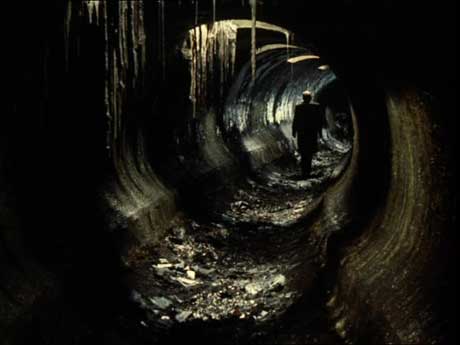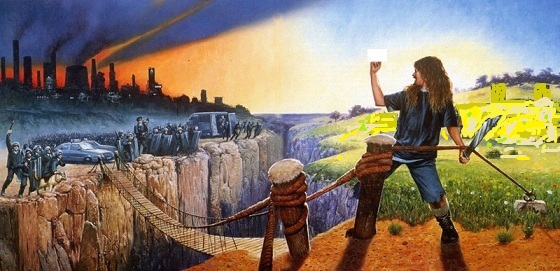It looks like you're using an Ad Blocker.
Please white-list or disable AboveTopSecret.com in your ad-blocking tool.
Thank you.
Some features of ATS will be disabled while you continue to use an ad-blocker.
share:
Novus Magnificat. Constance Demby
The title Novus Magnificat is Latin for "New Magnificat". Inspired by Western classical and sacred music, Novus Magnificat was self-defined as "A Magnificat and Exaltate for digital orchestra, choral voices, and special electronic images" and "Dedicated to the Infinite One..."
The music was performed using the Emulator II, one of the first digital sampling synthesizers available: this provided and combined the sound of real symphonic instruments and choirs under a single keyboard, hooked to a Roland Juno 60 "for arpeggiated effects and enhanced sounds".
Nothing being written down or scored in advance, the album was directly composed and recorded in 1985 by Demby at the keyboard. The music was further enhanced with electronic textures by composer Michael Stearns and refined with record co-producer and label co-founder Anna Turner. The result was termed, "Music conjured by the future, rooted in the Western sacred tradition."
en.wikipedia.org...
reply to post by Xoanon
This music sounds the way Yosemite and parts of New Zealand look. Thank you for sharing.
This music sounds the way Yosemite and parts of New Zealand look. Thank you for sharing.
Love this song, and the video, summer vibes.
edit on 11-3-2012 by Realm52 because: (no reason given)
Whale House Ruins: Brad Cole

Not so perfect for Sunday, but perfect for Sunday at ATS...
...I hope this will be the first time that many of you have heard this stuff,

X.

Not so perfect for Sunday, but perfect for Sunday at ATS...
...I hope this will be the first time that many of you have heard this stuff,
Stalker: The Film
Stalker (Russian: Сталкер) is a 1979 science fiction film directed by Andrei Tarkovsky, with a screenplay written by Boris and Arkady Strugatsky, loosely based on their novel Roadside Picnic. It depicts an expedition led by the Stalker to bring his two clients to a site known as the Zone, which has the supposed potential to fulfill a person's innermost desires.
The title of the film, which is the same in Russian and English, is derived from the English word to stalk in the long-standing meaning of approaching furtively, much like a hunter.
In the film The Stalker (Alexander Kaidanovsky) works as a guide who leads people through "the Zone" – an otherwise mundane rural area scattered with ruined buildings, where normal laws of physics no longer apply – to encounter "the Room", said to grant the deepest, innermost wishes of anyone who steps inside. In his home with his wife and daughter, the Stalker's wife (Alisa Freindlich) urges him not to go into the Zone because of the legal consequences, but he ignores her pleas.
The Stalker goes to a bar, where he meets the Writer (Anatoly Solonitsyn) and the Professor (Nikolai Grinko), who will be his clients on his next trip into the Zone. The three of them evade a military blockade that guards the Zone using a Land-Rover – attracting gunfire from the guards as they go – and then ride into the heart of the Zone on a railway work car. In a single shot, almost 7 minutes long, the 3 sit motionless, looking in 3 opposite directions on the railway work car, with the only sound accompaniment being the squeaking of its winch. As they pass from urban setting to rural, their surroundings grow strikingly colorful in contrast to the urban setting.
The Stalker tells his clients that they must do exactly as he says to survive the dangers that, while invisible, are all around them. The Stalker tests various routes by throwing metal nuts tied with strips of cloth ahead of him before walking into a new area. The Zone appears peaceful and harmless. The Writer is skeptical that there is any real danger, while the Professor generally follows the Stalker's advice...
...continued
en.wikipedia.org...
Stalker: The Album
Stalker (1995) is a collaborative album by ambient musicians Robert Rich and B.Lustmord (Brian Williams). It was inspired by the 1979 film of the same name by Andrei Tarkovsky.The cover image is a photograph by the critically acclaimed landscape photographer Brad Cole.

X.
The (slightly edited) pic below has nothing to do with the music above - its actually from a Prodigy album, which is about as different from the Allman Bros as its possible to get within the same music collection. But somehow it has the same feel to me as the song above, so since this is MOOD not logic, its part of the same mood for me.
I have a copy of this picture (the LP liner art, actually ) framed above the home bar at my place. I've taken a lot of flack for my supposed horrible taste because of it, but there it stays. You can take the boy out of the backwoods but you can't take the backwoods out of the boy.

edit on 3/12/12 by silent thunder because: (no reason given)
I choose Life and Earth
edit on 12-3-2012 by SLAYER69 because: (no reason given)
reply to post by Aeons
Couldn't we have negotiated first? When you is loverly, then love is what happens I Thank you for the vid, very important message that.
Couldn't we have negotiated first? When you is loverly, then love is what happens I Thank you for the vid, very important message that.
Primal Scream with Josh Homme (embedding disabled, guh.) :
www.youtube.com...
edit on 13-3-2012 by robhines because: fixed
link
reply to post by robhines
Here you go
sometimes that happens, no biggy, just a youtube deal, once again I am redundant "sighs"
Here you go
sometimes that happens, no biggy, just a youtube deal, once again I am redundant "sighs"
edit on 13-3-2012 by Iamschist because: added lower
ling
new topics
-
Nvm
General Chit Chat: 1 hours ago -
OK this is sad but very strange stuff
Paranormal Studies: 7 hours ago -
Islam And A Book Of Lies
Religion, Faith, And Theology: 8 hours ago -
Sorry to disappoint you but...
US Political Madness: 10 hours ago
top topics
-
Sorry to disappoint you but...
US Political Madness: 10 hours ago, 13 flags -
Watch as a 12 million years old Crab Emerges from a Rock
Ancient & Lost Civilizations: 15 hours ago, 10 flags -
OK this is sad but very strange stuff
Paranormal Studies: 7 hours ago, 6 flags -
Islam And A Book Of Lies
Religion, Faith, And Theology: 8 hours ago, 5 flags -
Nvm
General Chit Chat: 1 hours ago, 1 flags
active topics
-
Volcano Watch 2025
Fragile Earth • 7 • : Cracka -
Meta Llama local AI system is scary good
Science & Technology • 40 • : glend -
The Acronym Game .. Pt.4
General Chit Chat • 1035 • : bally001 -
Joe Biden gives the USA's Highest Civilian Honor Award to Hillary Clinton and George Soros.
US Political Madness • 49 • : ADVISOR -
Nvm
General Chit Chat • 1 • : Mantiss2021 -
Post A Funny (T&C Friendly) Pic Part IV: The LOL awakens!
General Chit Chat • 7993 • : Cymru -
ILLUMINATION: Dimensions / Degrees – Da Vincis Last Supper And The Philosophers Stone
Secret Societies • 6 • : Compendium -
Sorry to disappoint you but...
US Political Madness • 15 • : Flyingclaydisk -
Musk calls on King Charles III to dissolve Parliament over Oldham sex grooming gangs
Mainstream News • 180 • : Freeborn -
Islam And A Book Of Lies
Religion, Faith, And Theology • 3 • : nugget1




